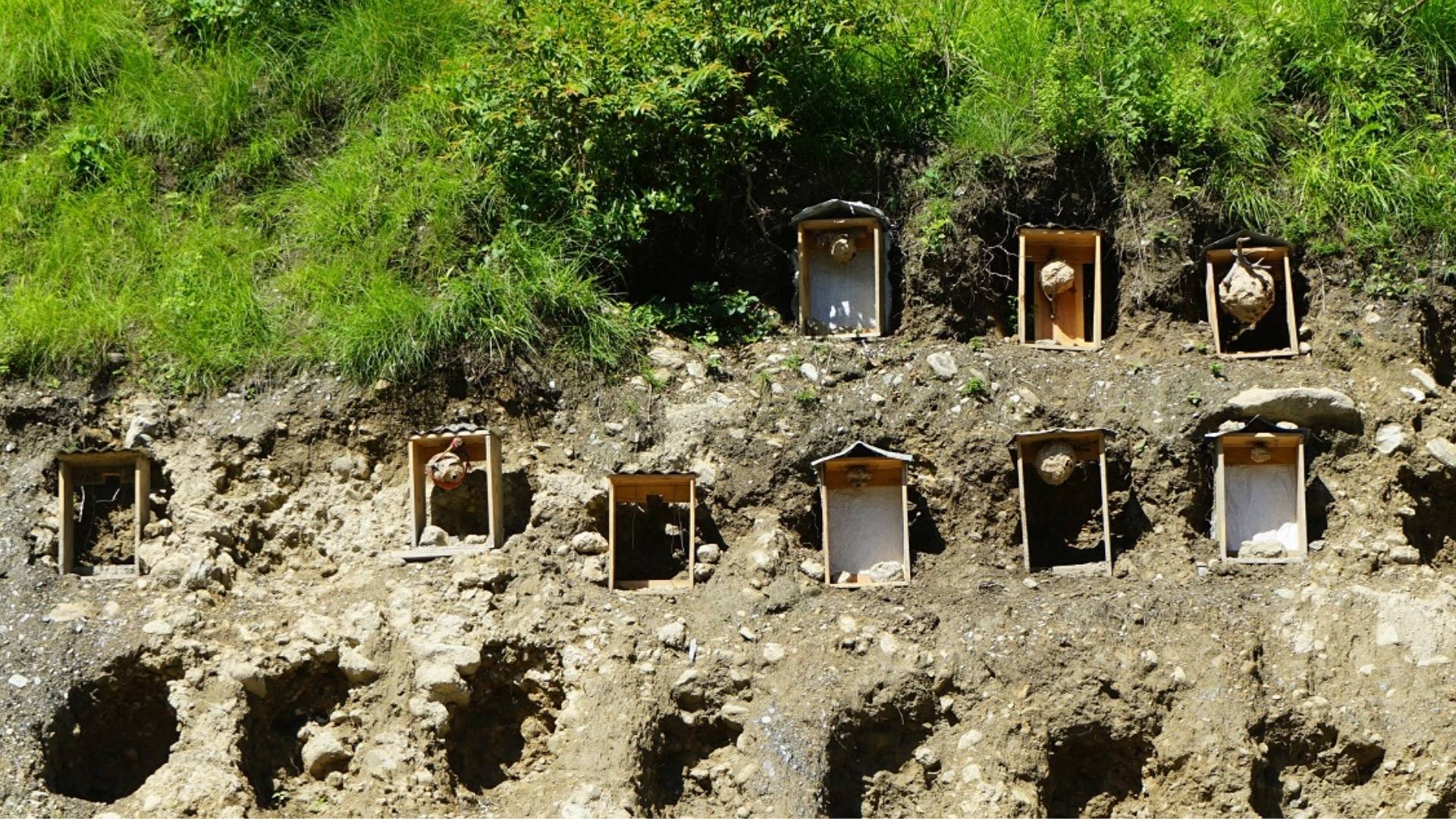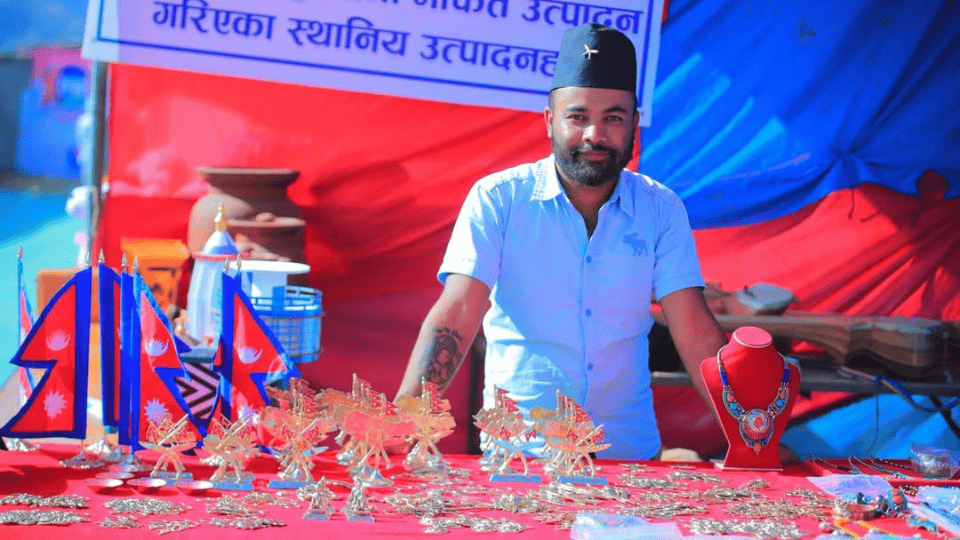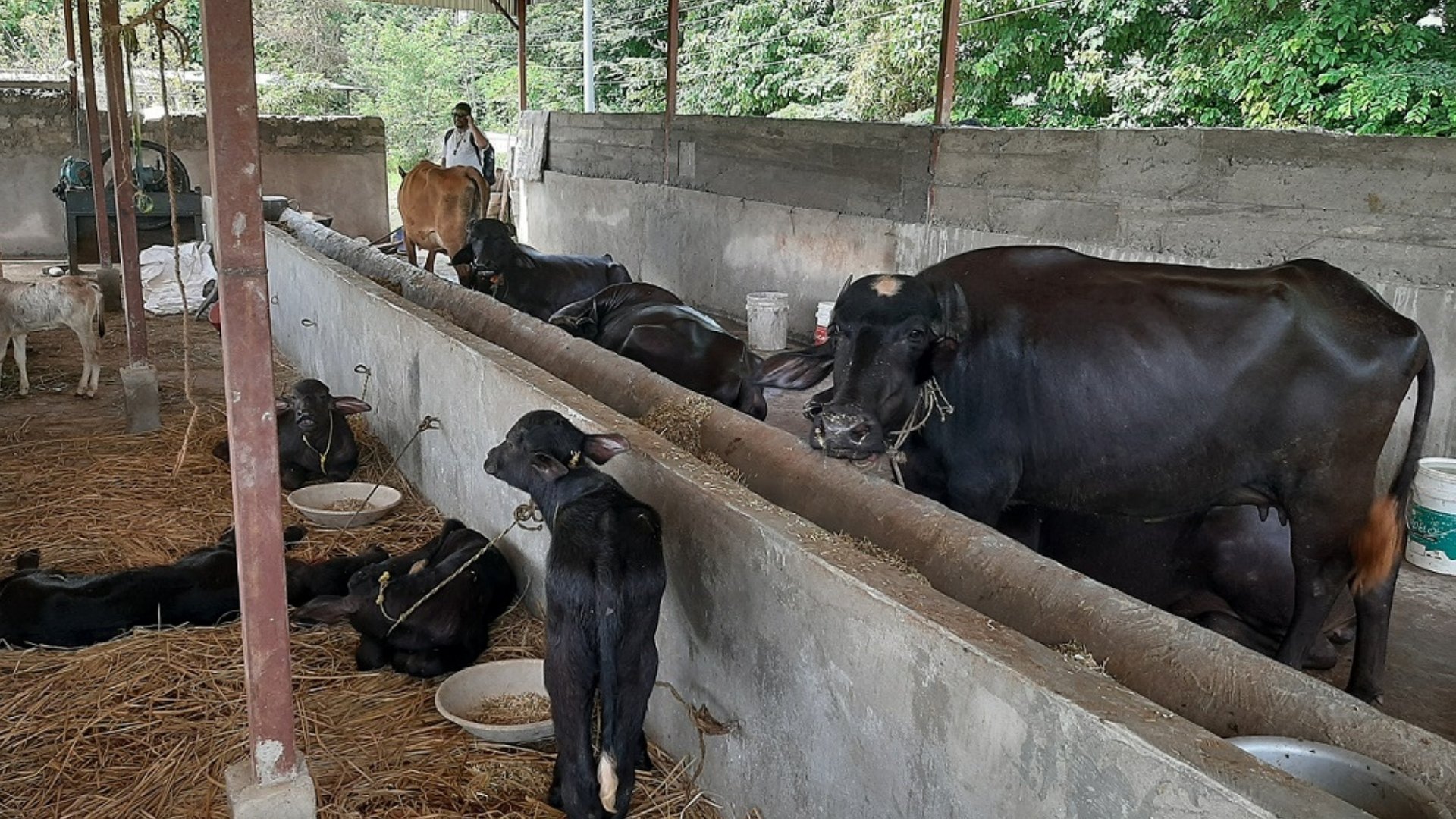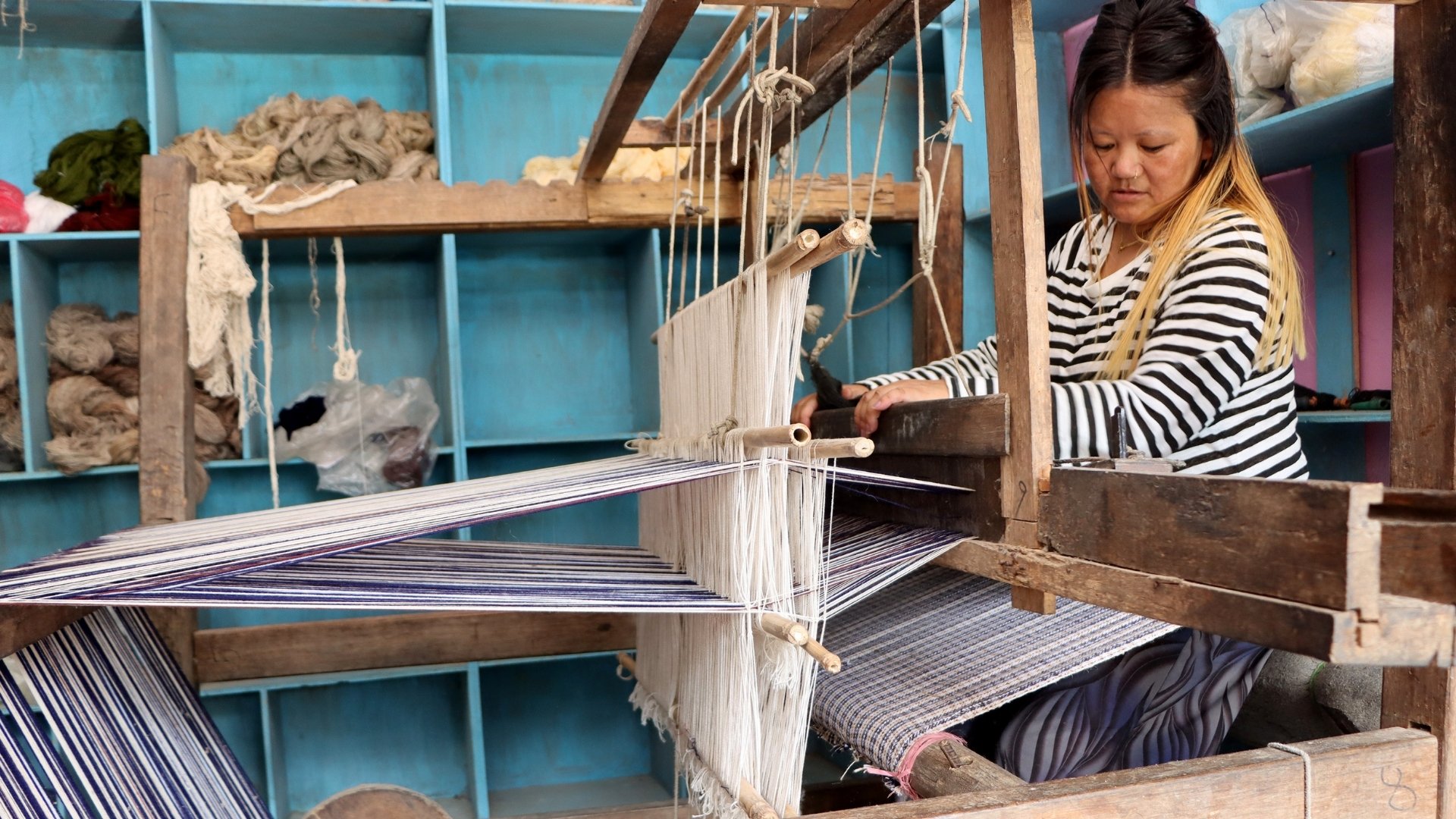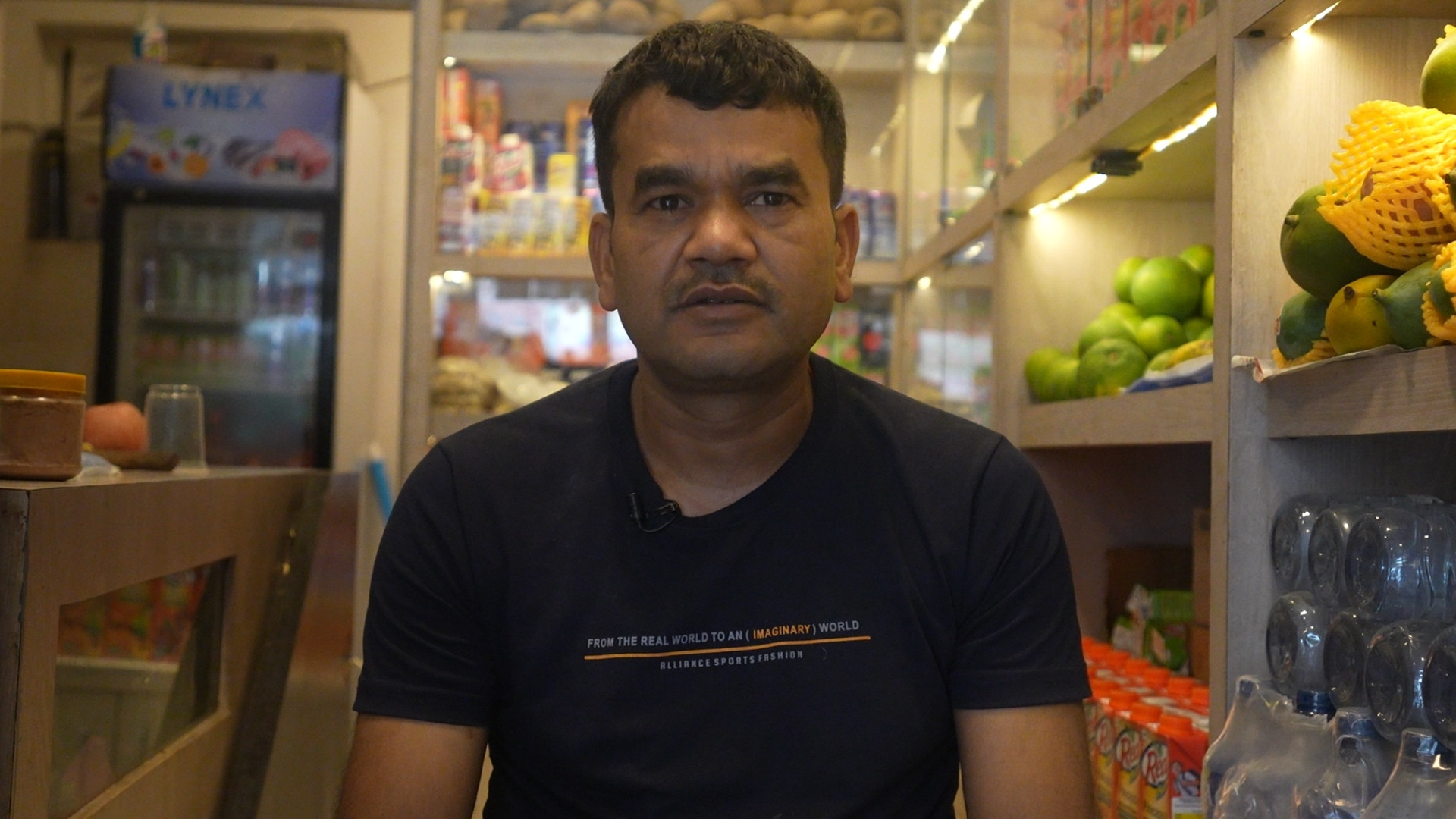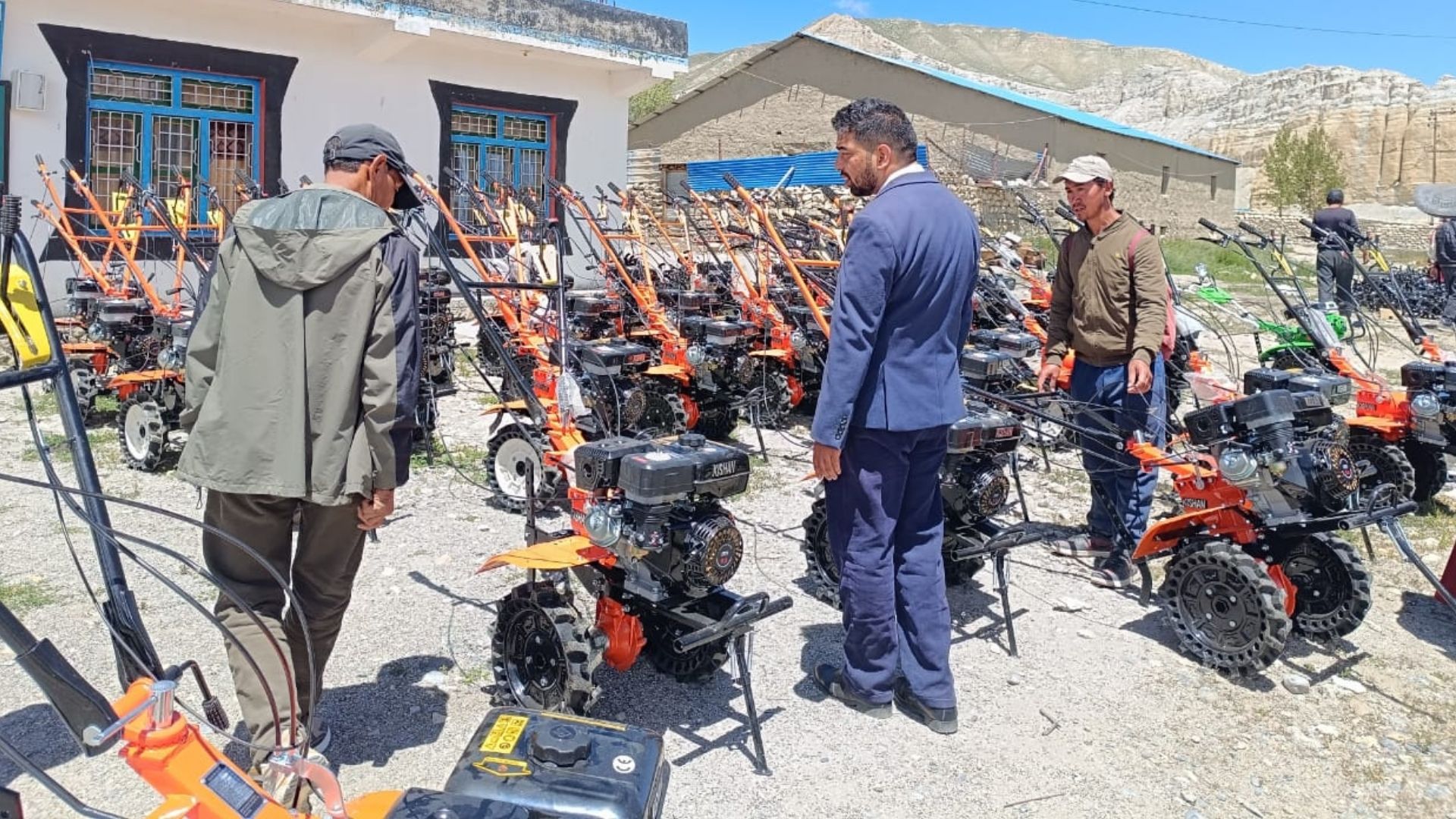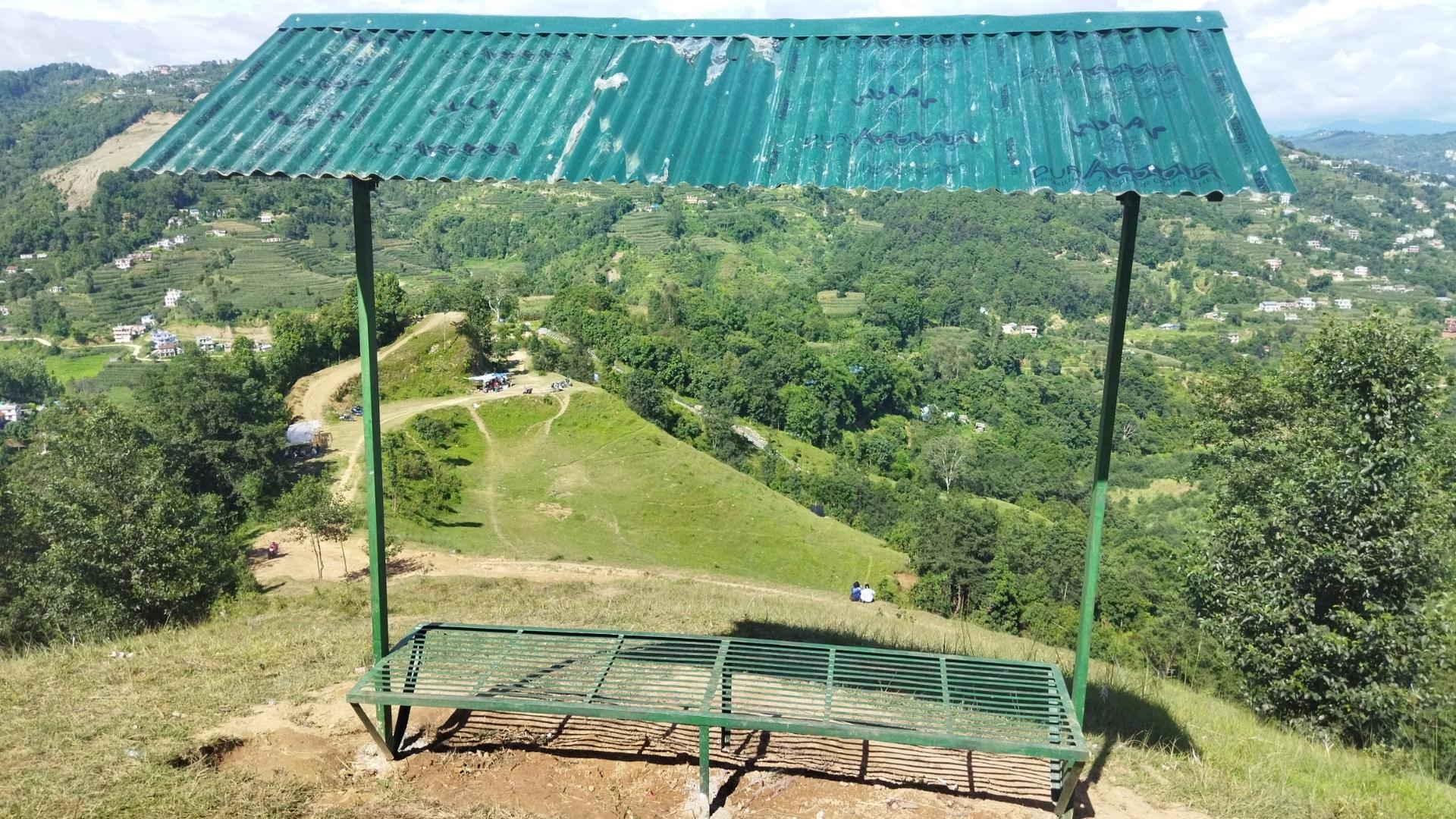Small holes dot the sloped walls of the hillside fields. Near each hole, tarpaulin has been laid to provide shelter. Beneath these shelters are hornet nests. Ashok Shahi of Jamunakharka, Beni Municipality–6 in Myagdi, has been engaged in commercial hornet rearing on the sloped fields of Rahuwada.
Shahi shared that he started raising 11 hornet nests collected from the nearby forest. Alongside him, his wife Geeta has also been raising hornets—placing them in the retaining wall of their Chilli farm in Rahuwada and on the veranda of their home in Jamunakharka.
“We tried hornet rearing last year as part of a plan to explore a new kind of enterprise, and it was successful,” says Geeta. “Just like beekeeping, transferring hornet nests allows both conservation and income generation.”
Geeta, who is also a microenterprise development facilitator at Jaljala Rural Municipality in neighboring Parbat district, has been supported by her husband Ashok, who runs a handicrafts and furniture business in the village.
According to Shahi, up to 8 kilograms of hornet larvae can be harvested from one nest every two months. “We offer half of the earnings to those who show us the location of hornet nests in the forest,” says Ashok. “We climb trees with special sting-proof clothing and safety harnesses to bring down nests with the queen and raise them.”
Based on the couple’s experience, about 25% of hornets brought from the forest leave the new location, while 75% stay and adapt. “Hotels in Beni sell dishes made from hornet larvae. Raw larvae sell for Rs. 3,500 per kilogram,” Shahi says.
Last year, the couple produced 30 kgs of larvae. This year, they are aiming to rear 25 nests and sell around one quintal (100 kgs) of larvae. “Each nest can yield up to 8 kilograms of larvae per harvest, and harvesting can be done every two months,” he adds.
The reared hornets forage in nearby forests and fields. They feed on insects, bugs, and various types of flowers and fruits. During rainy days, Shahi provides meat and fruits as supplementary food.
According to Rajan Lama, a hotel entrepreneur in Beni, roasted hornet larvae, known for their energizing properties, sell for Rs. 600 per bowl. He notes that hornet dishes are especially popular among visitors during the monsoon. The hornets begin building their nests around late May (Jestha), and the larvae are sold until around November (Kartik).
“Hornet rearing is not an easy job. Transferring nests from the forest can be life-threatening if not done carefully. Hornets become aggressive and are likely to sting,” Ashok says. “The transfer must be done at night when they’re resting, and we keep them in places with minimal human activity.” According to him, red and black species of hornets are the most commonly found.
Bishnu Prasad Adhikari, head of the District Division Forest Office, states that hornet rearing is a new forest-based enterprise in Myagdi. “Instead of destroying entire hornet colonies by burning nests for larvae, rearing them promotes both conservation and income. But due to the risks involved, caution is necessary,” he says.


